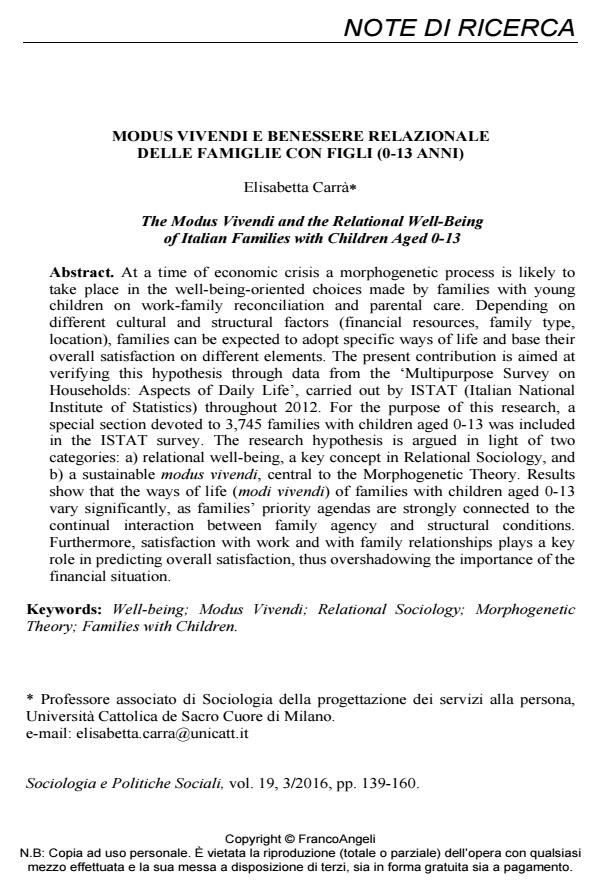The Modus Vivendi and the Relational Well-Being of Italian Families with Children Aged 0-13
Journal title SOCIOLOGIA E POLITICHE SOCIALI
Author/s Elisabetta Carrà
Publishing Year 2016 Issue 2016/3
Language Italian Pages 22 P. 139-160 File size 278 KB
DOI 10.3280/SP2016-003009
DOI is like a bar code for intellectual property: to have more infomation
click here
Below, you can see the article first page
If you want to buy this article in PDF format, you can do it, following the instructions to buy download credits

FrancoAngeli is member of Publishers International Linking Association, Inc (PILA), a not-for-profit association which run the CrossRef service enabling links to and from online scholarly content.
At a time of economic crisis a morphogenetic process is likely totake place in the well-being-oriented choices made by families with youngchildren on work-family reconciliation and parental care. Depending ondifferent cultural and structural factors (financial resources, family type,location), families can be expected to adopt specific ways of life and base theiroverall satisfaction on different elements. The present contribution is aimed atverifying this hypothesis through data from the ‘Multipurpose Survey onHouseholds: Aspects of Daily Life’, carried out by ISTAT (Italian NationalInstitute of Statistics) throughout 2012. For the purpose of this research, aspecial section devoted to 3,745 families with children aged 0-13 was includedin the ISTAT survey. The research hypothesis is argued in light of twocategories: a) relational well-being, a key concept in Relational Sociology, andb) a sustainable modus vivendi, central to the Morphogenetic Theory. Resultsshow that the ways of life (modi vivendi) of families with children aged 0-13vary significantly, as families’ priority agendas are strongly connected to thecontinual interaction between family agency and structural conditions.Furthermore, satisfaction with work and with family relationships plays a keyrole in predicting overall satisfaction, thus overshadowing the importance of thefinancial situation.
Keywords: Well-being; Modus Vivendi; Relational Sociology; MorphogeneticTheory; Families with Children.
Elisabetta Carrà, Modus vivendi e benessere relazionale delle famiglie con figli (0-13 anni) in "SOCIOLOGIA E POLITICHE SOCIALI" 3/2016, pp 139-160, DOI: 10.3280/SP2016-003009